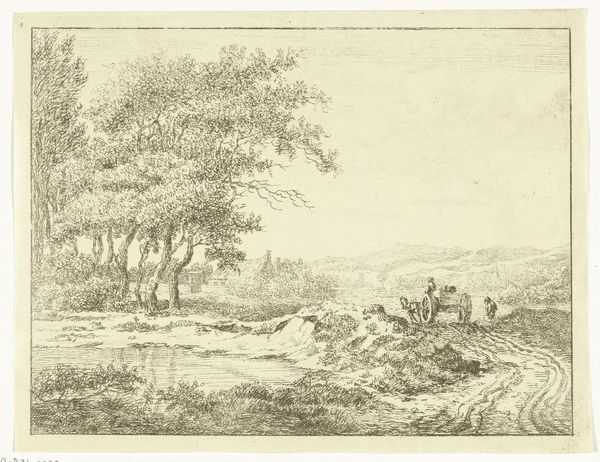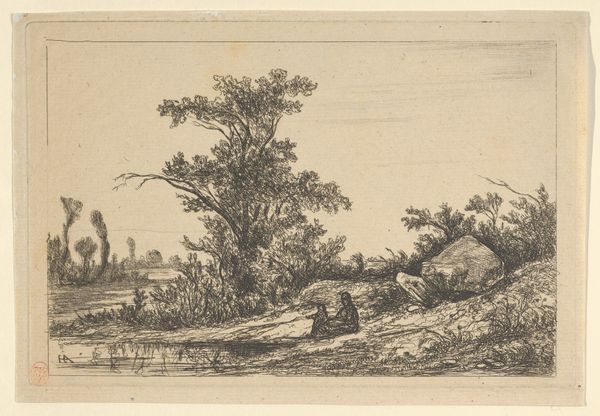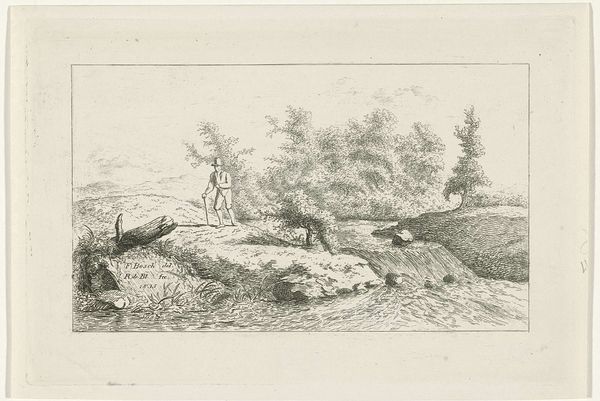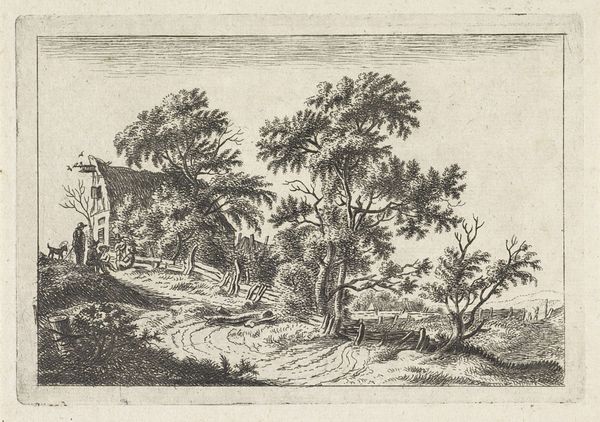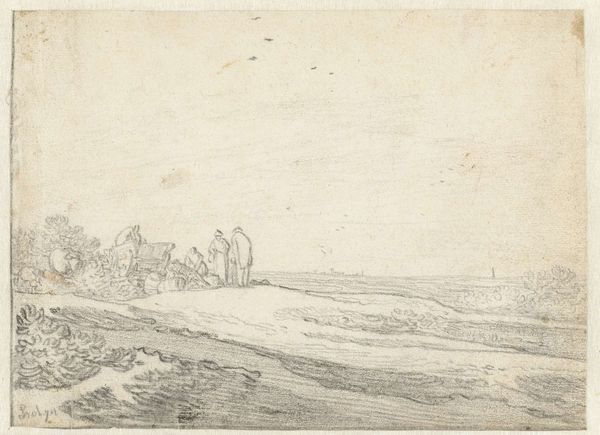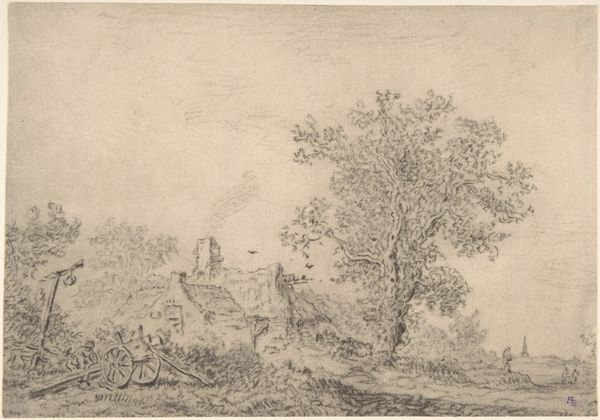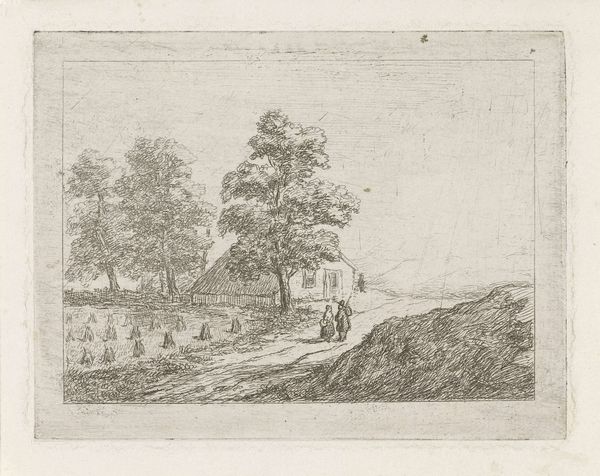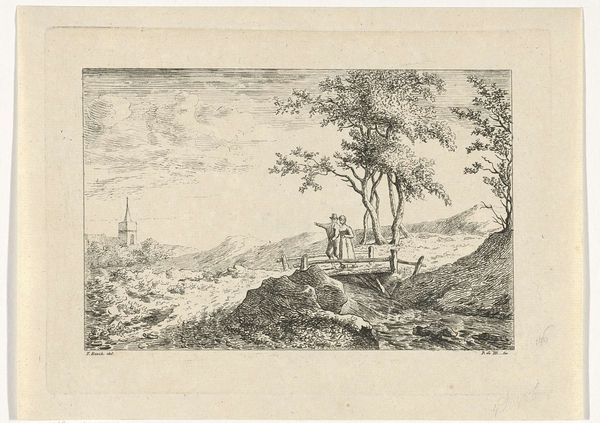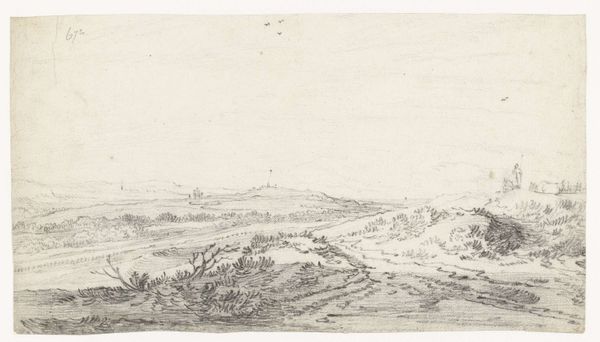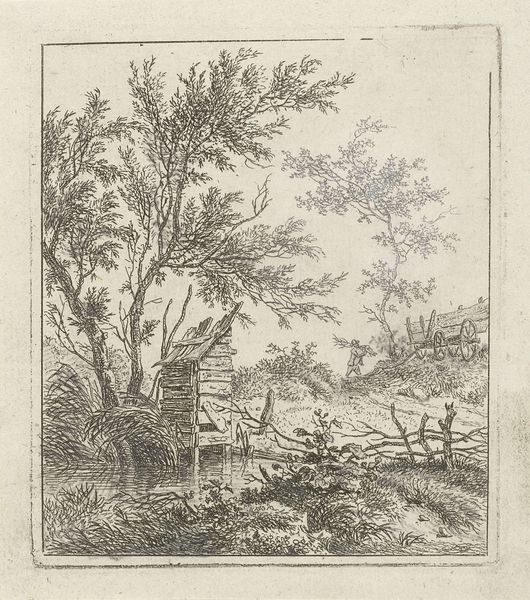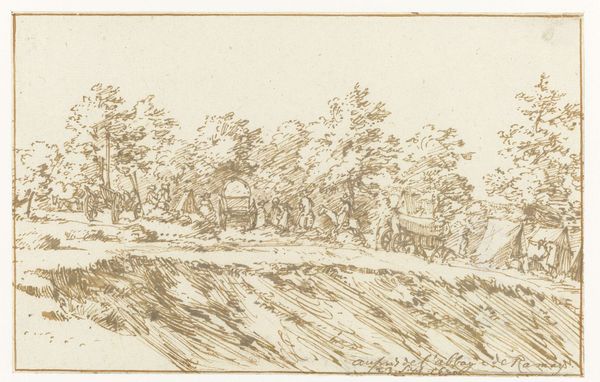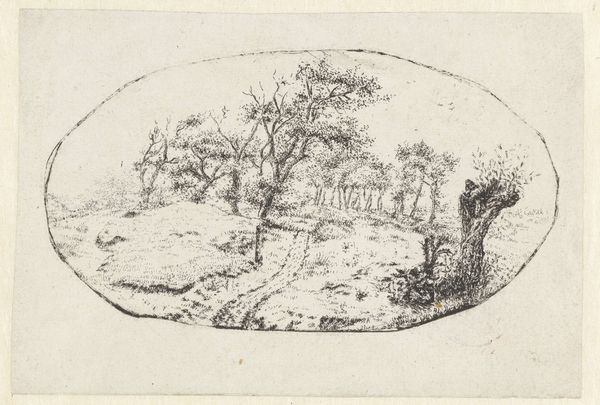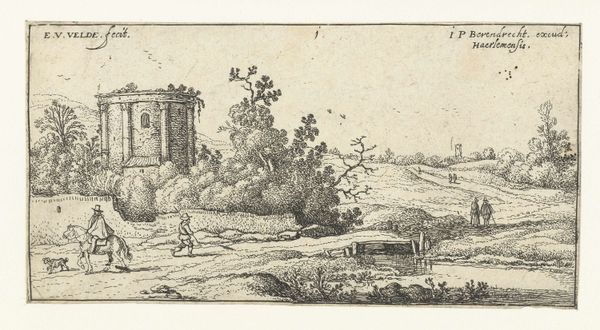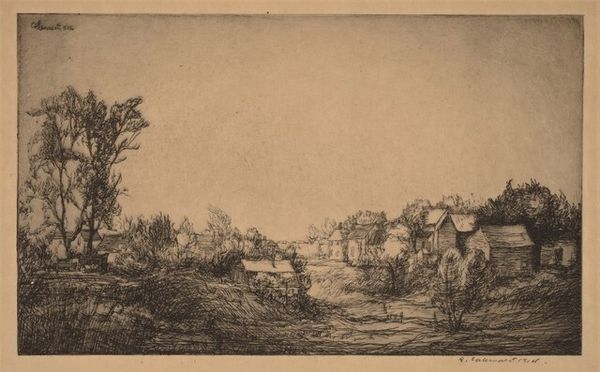
drawing, ink, pencil
#
drawing
#
pen drawing
#
pen sketch
#
landscape
#
ink
#
romanticism
#
pencil
#
line
#
sketchbook drawing
#
realism
Dimensions: height 42 mm, width 75 mm
Copyright: Rijks Museum: Open Domain
Editor: So, here we have "Landschap met houten brug," or "Landscape with Wooden Bridge," a pen and ink drawing. It could have been made anytime between 1796 and 1856 by Reinierus Albertus Ludovicus baron van Isendoorn à Blois. It looks like a pretty standard landscape sketch, but it gives me a somber, melancholic feeling. What do you see in this piece? Curator: That melancholic feeling resonates deeply, and it's something I think emerges from understanding this piece within its historical context. The mid-19th century saw massive social upheaval. Do you notice the figures in the foreground? They're dwarfed by the landscape, almost anonymous. Think about how industrialization changed labor during this time. Does their depiction suggest anything about how their identities and work are represented? Editor: They do look…disconnected. Almost like they’re there to show scale, rather than being active participants in the scene. It makes me wonder about class and labor divisions. Curator: Exactly. This is not just a landscape; it's a statement. Acknowledging the power dynamics at play reveals that nature can function as both an escape from and a reminder of those struggles. What if the artist is attempting to depict his own privilege, vis-a-vis these laborers? How does it make you feel if these social divisions exist? Editor: It complicates the initial “romantic” reading. Knowing that context pushes me to consider who had the luxury to contemplate nature versus who was exploited *by* it. Curator: Precisely. Seeing this not as a simple landscape but as a commentary on labor, identity, and the individual’s place in a changing world provides depth. Do you think the wooden bridge also hints to something about the intersection between nature and technology? Editor: Absolutely. The bridge isn't just functional; it's symbolic. It really does highlight how intertwined these issues were during that time period. I definitely have a lot to think about. Curator: Indeed, art like this invites us to critically assess the social and political forces that shaped not only the art itself, but also society at large. It provides a mirror to the past.
Comments
No comments
Be the first to comment and join the conversation on the ultimate creative platform.
